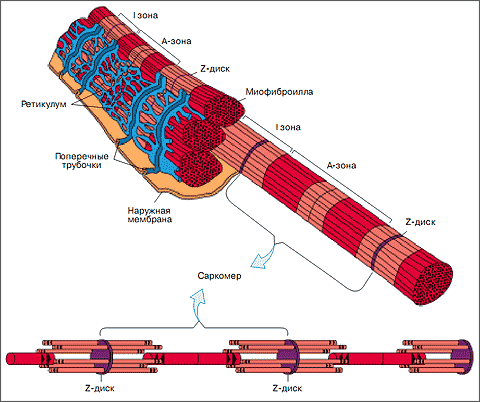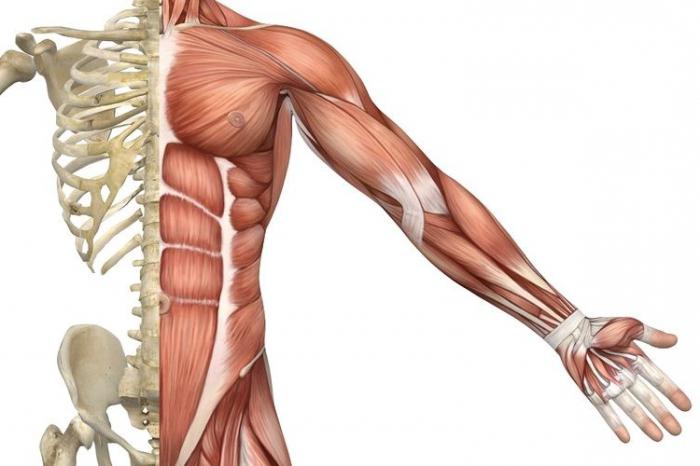If you carefully analyze the above examples of training programs, you will notice that in the dynamics of changes in training methods there was a constant tendency to increase the interval between repeated training of muscle groups.
The classic 3-day methodology involved training muscle groups 3 times a week, with a rest interval of one day. For example, if you trained your pecs on Monday, you would re-train your pecs on Wednesday and only one day would be allotted for pec recovery, in this example, Tuesday.
A more progressive method, the classic 4-day split, involved 4 workouts per week, working each muscle group twice a week, with each group re-training 3-4 days apart.
Further, the classic 4-day, 5-day and 6-day splits were replaced by the “3+1” and “4+1” training systems. In the “3+1” system, muscle groups were worked once every 4 days, and in the “4+1” system – once every 5 days. In addition to increasing the rest intervals between the training of muscle groups to 4-5 days, the variability of the training load itself was also used. One training session was conducted with a “heavy” load, the next – with a “light” load. That is, a muscle group was worked “hard” once every 8-10 days. We will consider the issues of variability of training load in more detail in the following chapters, but now we will continue to consider the topic of skeletal muscle recovery rate.
As you may have noticed, with the development of training methods, the rest interval between repeated training of one muscle group has gradually increased from 1 day to 5 days, and if we take into account the use of only “heavy” load – up to 8-10 days.
What was the reason for this change in the increase in the duration of rest intervals between repeated muscle group training? On the one hand, the increase in rest intervals was caused by successful experiments of individual athletes who intuitively felt that the proposed training schemes did not provide them with a full recovery between workouts.
On the other hand, the increase in rest intervals has been influenced to a greater extent by scientific research into the processes occurring in the muscle both during loading and during recovery from extreme and near-extreme loads.
People who are at least a little bit connected with physical activity know that after an intense training load in the muscles there is pain. In scientific research, this type of pain has been given its own name – delayed-onset muscle pain or, abbreviated, DMP.
Deferred Muscle Pain
The presence of delayed onset muscle pain indicates that the muscles have received an unaccustomed load and destructive processes have occurred in them. A bodybuilder consciously seeks to cause destruction in the muscles, because, following the principle of supercompensation, the greater the destruction – the greater the subsequent recovery. But, as we already know, the destruction should be significant only up to a certain degree. If we produce too much destruction, it will take the body much longer to recover the “losses” and the degree of super-recovery will be small. This is why there is no need to constantly perform work to the point of complete muscle exhaustion.
What happens in the muscles after performing near-extreme and extreme intensity work? Scientific studies of this question have shown that delayed-onset muscle soreness (DOMS) appears 8-12 hours after exertion, peaks at an average of 24-72 hours and then subsides within 5-12 days. During pain, the muscles become sensitive to touch, their extensibility decreases, and pain increases with sudden movements. Pain sensations may be accompanied by reactions similar to inflammatory ones: there is swelling, increase in temperature and hardness of muscles. In pain, there is a decrease in the amplitude of movements, muscle strength in isometric and concentric modes.
Microscopic studies of muscle tissue samples taken from people with OMB have revealed a number of structural changes both in the muscle cells themselves and in the intercellular space. As a rule, immediately after exercise inducing OMB, these changes are either undetectable or weakly expressed. Please pay special attention to this fact: structural changes in the muscle immediately after work are either undetectable or weakly expressed. Rapidly contracting muscle fibers are subject to stronger structural changes.
Full restoration of normal muscle ultrastructure occurs within about 10 days. This is an interesting fact that allows us to understand why breaks between heavy workouts of the same muscle group are usually 8-10 days.
The following damage occurs in the contractile apparatus: on longitudinal sections of biopsy specimens, disturbances in the pattern of transverse striated striation of skeletal muscle tissue are pronounced. Sarcomere disks (each myofibril consists of several hundreds of sarcomeres connected in series) undergo the most significant damage. They expand greatly and take on the appearance of a developing ribbon. Z-disk material is distributed throughout the sarcomeres. In severe injuries in 2-3 days, ruptures of Z-discs, sarcolemma and muscle fibers themselves may be observed.
The Structure of a Muscle Fiber
A myofibril is made up of identical repeating elements,
called sarcomeres. The sarcomeres are bounded on both sides by Z-discs.
Attached to these disks on both sides are attached
thin actin filaments.
I want to appeal to people who train every muscle group hard after 2-3 days: how can you expect to grow muscle mass, if 2-3 days after hard work not only there is no muscle recovery, but even destructive processes in muscle tissue continue?”
In the intercellular space 1-3 days after strenuous work may be observed necrotic fibers. Sometimes free erythrocytes and mitochondria are found immediately after exertion, which probably exit the muscle cell through the damaged sarcolemma. After a few days, phagocytes, macrophages, and satellite cells are detected. All this indicates that the body’s immune system is activated.
The concentration of muscle enzymes in the blood increases, which may indicate the destruction of the membrane of muscle fibers or a change in its permeability. The maximum concentration of muscle enzymes occurs 1-3 days after exercise,
Muscle enzyme concentration increases in the blood.
The studies note that repetitive work performed after 14 days results in muscle soreness. That is, the peak of over-recovery has already passed and the muscles have returned to their original level of fitness.
It is obvious that the speed of recovery processes is directly related to the intensity of the work performed. The lower the intensity, the shorter the breaks between repeated training of a muscle group can be, the higher the intensity of work – the longer the recovery period should be.
To better understand these processes, it is necessary to familiarize ourselves with the biological principles on which training in any sport is based. These principles will be discussed in the next chapter.
The use of materials of the site BodyBuild.com.ua in the Internet is allowed only in the presence of an active hyperlink to the source – BodyBuild.com.ua.
The use of materials of the site in printed publications is possible only after obtaining written permission of the author of the site.







